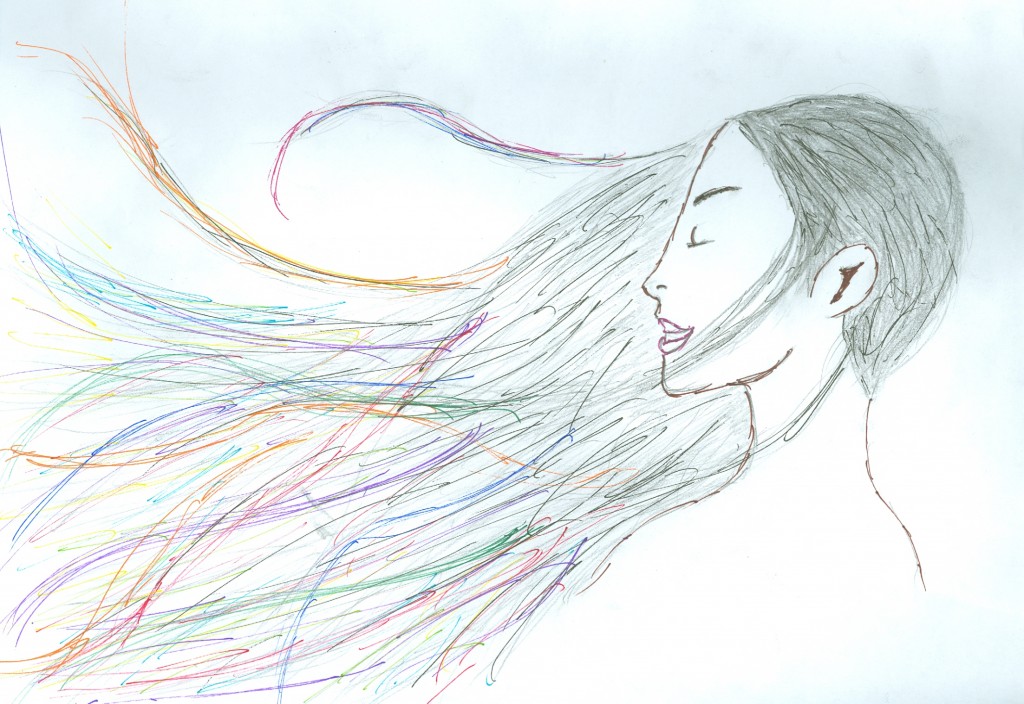The Laughter of a Woman
In the singing springs of stony mountains
Echoes the gentle laughter of a woman
Wealth, power and fame mean nothing
In her body, hidden, lies her freedom
Let the new gods of the earth try as they can
They cannot hear the sob of her ecstasy
Everything sells in this market-place
save her satisfaction
the ecstasy she alone knows
which she herself cannot sell
Come you wild winds of the valley
Come and kiss her face
There she goes, her hair billowing in the wind
The daughter of the wind
There she goes, singing with the wind
by Fahmida Riaz
I was inspired by this translation of a poem by Fahmida Riaz. This is a poem in a collection of poetry from contemporary Urdu feminists called We Sinful Women. Urdu poetry has been mainly consisting of men with critics also being men. As we discussed in class, feminism is a rising but also long-standing movement in the Muslim community as women are often shut off from things such as recitation and poetry. In the book it states, “The source of the prejudice in both cases is exactly the same: the conservatism of literary establishments and their stranglehold on aesthetic values, their tendency to dismiss work to which they cannot themselves relate and their inability to empathize with work that derives directly from women’s experiences” (1). I was moved by the discussion in class, especially the video we watch of the actress arguing on that news network. There is such a spectrum of opinion in the Muslim community as shown in Persepolis and in all our discussions in class.
I aimed to take this moving poem about freedom of the self and try to capture it in an image. Disclaimer: I am not a painter, drawer, etc at all so I apologize to Riaz. I started with a pencil drawing of a woman and decided to add her hair flowing in the wind which is such a striking image in this poem. It is a contrast to the restriction of the veil that is also talked about in the poems of this anthology. I wanted to capture that exhilaration of freedom and the woman letting her hair blow in the wind. I did this through having her hair start just black ink and pencil and then transform gradually into a colorful array and expand to take up a lot more of the space. The colors are to represent that freedom and letting go of the oppression that woman often feel. I think this poem is beautiful and captures a lot of her anger as a woman that is often felt of as less because of the dominance of the men in this society.
